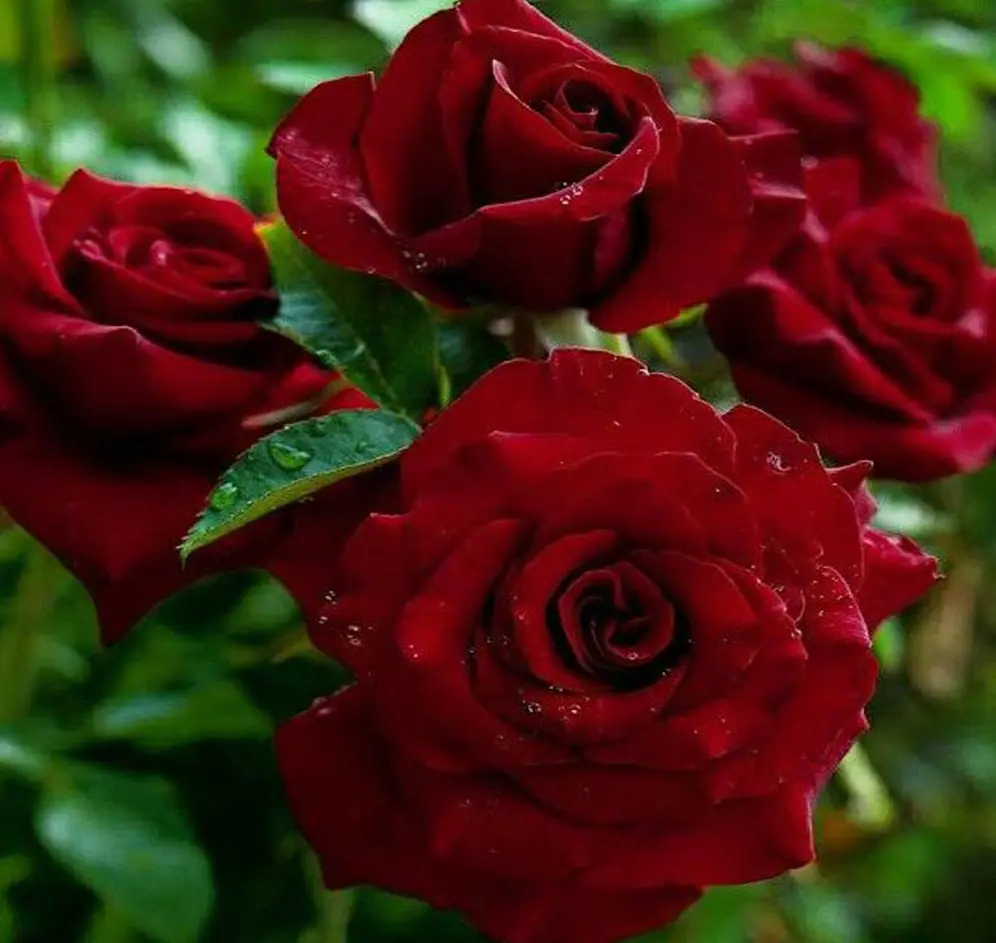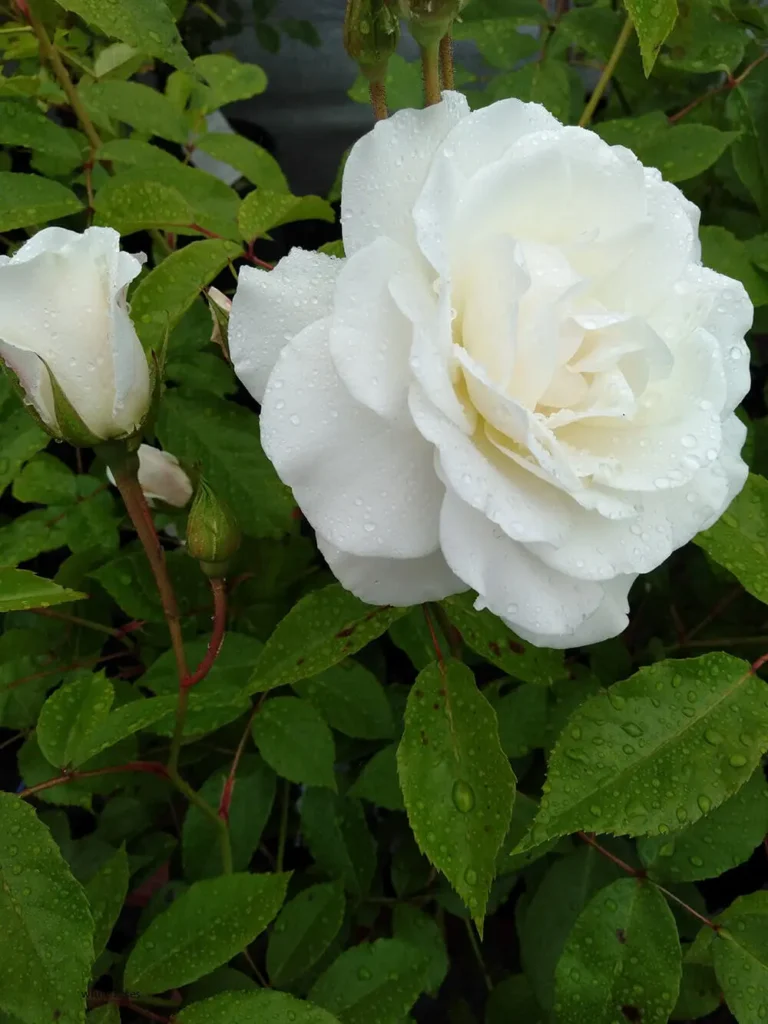Dipladenia is a tropical flowering plant that has bushy leaves and trumpet-shaped flowers. It is also known as Mandevilla and is widely used for ornamental purposes all over the world. It requires minimal care and beautifies indoor and outdoor spaces.

Difference between Mandevilla and Dipladenia
Dipladenias and mandevilla are closely related to each other, but Dipladenia is present in a shrub-like form while mandevilla is vine-like. Mandevilla plants are slightly larger than Dipladenia. In comparison, all other characteristics are the same.
Physical appearance
The physical appearance of tall Dipladenia is given below:
FLOWER COLOR
They have beautiful eye-catching flowers of colors of white, red, coral, yellow, and pink which look beautiful and draw attention towards them not only people but also insects.
FLOWER SHAPE
They have beautiful trumpet-shaped flowers of different colors. Some of its types are also present in tubular or some in star shape.
LENGTH
Dipladenia shrubs can grow up to 20 feet/6 meters. It grows in the form of a climbing or trailing plant and is mostly grown in buckets or containers as a hanging plant. It produces large flowers and blooms earlier.
LEAVES
They have bushy dark green, glossy leaves that are fined and pointed. They also play an important in beautifying them and also give a sense of refreshment.
BLOOMING TIME
Dipldenia flower has a long blooming time and bloom tirelessly until the first frost. If they are fertilized before the blooming time they will bloom continuously and will produce large, healthy flowers.
Types of Dipladenia

My Fair Lady Dipladenia
My Fair Lady Dipladenia has dark green leaves with trumpet-shaped flowers. It can tolerate direct sunlight and it thrives in bright light and it is not tolerant to frost. It prefers well-drained soil and during the growing seasons fertilizes the plants every 4-6 weeks.

Mandevilla Sanders
Brazilian Jasmine is another name for Mandevilla sanders and it has large trumpet-shaped flowers of red, pink, white, and yellow color. It is 2-4 meters tall and has a climbing or trailing vine appearance. Mandevilla Sanderi also contains toxic white latex and can irritate it. It thrives in warm temperatures and is native to tropical regions.

Rio Diplodenia
It is a climbing and fast-growing plant and has glossy, dark green leaves. Rio Dipladenia has trumpet-shaped large flowers of red, white, and pink color. It is mostly used as a hanging plant, thrives in warm temperatures, and prefers bright and indirect light.

Mandevilla Boliviensis
It is also known as the Bolivian mandevilla. It has white, funnel-shaped flowers and dark green glossy leaves. One of its unique features is its pleasant odor. Its growth habit is more compact than other varieties. It also thrives in warm temperatures and cannot tolerate frost.

Rubiniana
It has tubular-shaped vibrant flowers of red, white, and pink color and it is a tropical plant. It is also known as Dipladenia rubra. Rubiniana has lush, dark green leaves and grows in the form of a climbing or trailing plant. It is mostly grown in containers and hanging buckets.

The Mandevilla laxa
Mandevilla laxa due to its resemblance with jasmine is commonly known as Chilean Jasmine. It has white or creamy white color flowers with a pale yellow color at the center. It has a strong fragrance.
Why do gardeners love Dipladenia?
It is a supporting plant that blooms long all the summer and makes our gardens, homes, and offices beautiful:
Dipladenia a Hanging Plant
We can grow tall dipladenia flowers easily in hanging baskets, containers, and window boxes. It thrives in containers.
Resilient Plant
They do not need a transplant, they can tolerate pot-bound. But annual transplanting keeps our diplodenia best.
Sun Lovers
These plants are sun lovers like Garden Roses. They like heat and we can plant them outdoors in zones 9 to 11. During the hottest part of the day, dipladenia prefers an afternoon shade.
Wind Tolerant
Dipladenia bush can tolerate wind. Their stems have great strength and they can easily resist wind. So, they are the best plants to grow in windy areas.
Resilient Plant
They do not need a transplant, they can tolerate pot-bound. But annual transplanting keeps our diplodenia best.
Sun Lovers
These plants are sun lovers like Garden Roses. They like heat and we can plant them outdoors in zones 9 to 11. During the hottest part of the day, dipladenia prefers an afternoon shade.
DIPLADENIA PLANT CARE
Dipladenia does not require much care only a few points should be followed:
WATER
These plants grow better in moist and well-drained soil. Dipladenia plants need to be watered frequently in summer, especially during extremely hot weather. Once per week is a good rule of thumb, where the first 1 to 2 inches of soil should be dry. But if the soil gets too dry the plant will stress.
TEMPERATURE
Dipladenia mandevilla sanderi plants like heat and cannot tolerate temperatures below 45 degrees. So, it is suggested to grow them annually and in winter move them to a sunny indoor spot so they can get sufficient sunlight and temperature.
REPOTTING
Repotting is usually done in two to three years. Repot the plant only when it is necessary but if the plant is already in a pot then repotting is recommended in spring or at the growing season. The best soil for it is Searles Platinum Potting Mix.
PRUNING
These plants do not require pruning as well as deadheading. Because blooms fade and drop on their own. But for best possible growth some pruning may be necessary.
FEEDING
It is not a very hungry plant. There is no need for feeding over winter. But during summer or spring feeding can be done twice a month. Too much nitrogen can interfere with flowering.
HUMIDITY
Humidity is preferable. It is a tropical species that grows in warm climates where humidity is kept around 50% to 60%.
Care during winter
During winter reduce watering and water dipladenia bush when only the top two inches of soil are dry. It is a heat-loving plant and cannot tolerate temperatures below 45 degrees.
During winter bring the container plants indoors, and place them in front of a sunny window where the temperature is between 55 and 60. Feeding is not required during winter, only fertilize it when new growth starts.
How to plant Dipladenia
1. Before planting the plant soak its roots in the water and let them dry out.
2. Dig a hole at a location that receives bright sunlight and its width and depth will be the same as the root ball.
3. To place the plant, make a mound in the center of the hole and gently place the plant in it.
4. After placing the plant spread its roots down the sides of the mound and level the top of the root ball with the surrounding soil.
5. Firm the plant gently and start filling the hole with soil that you have dug out while making the hole.
6. At the end, water the plant thoroughly and add 1 to 2 inches of mulch around it.
Best time to plant Dipladenia
The best time to plant mandevilla sanderi is at the end of the spring season because the plant will be established before the hot summer months. At the end of the spring season, the plant will establish before the hot summer months because in extremely hot summer months, their growth ceases.
Other Varieties of Dipladenia
1.Sun Parasols Dipladenia
2. Coral Orange Sunrise Dipladenia
3.Maximo Red Dipladenia
4. Opal Citrine Dipladenia
5.Hot Pink Dipladenia
6.Scarlet Pimpernel Dipladenia
7. Rio White
8. Cream pink Dipladenia
9. Agathe White
10.SundevillaRed
11. Light pink bellac





